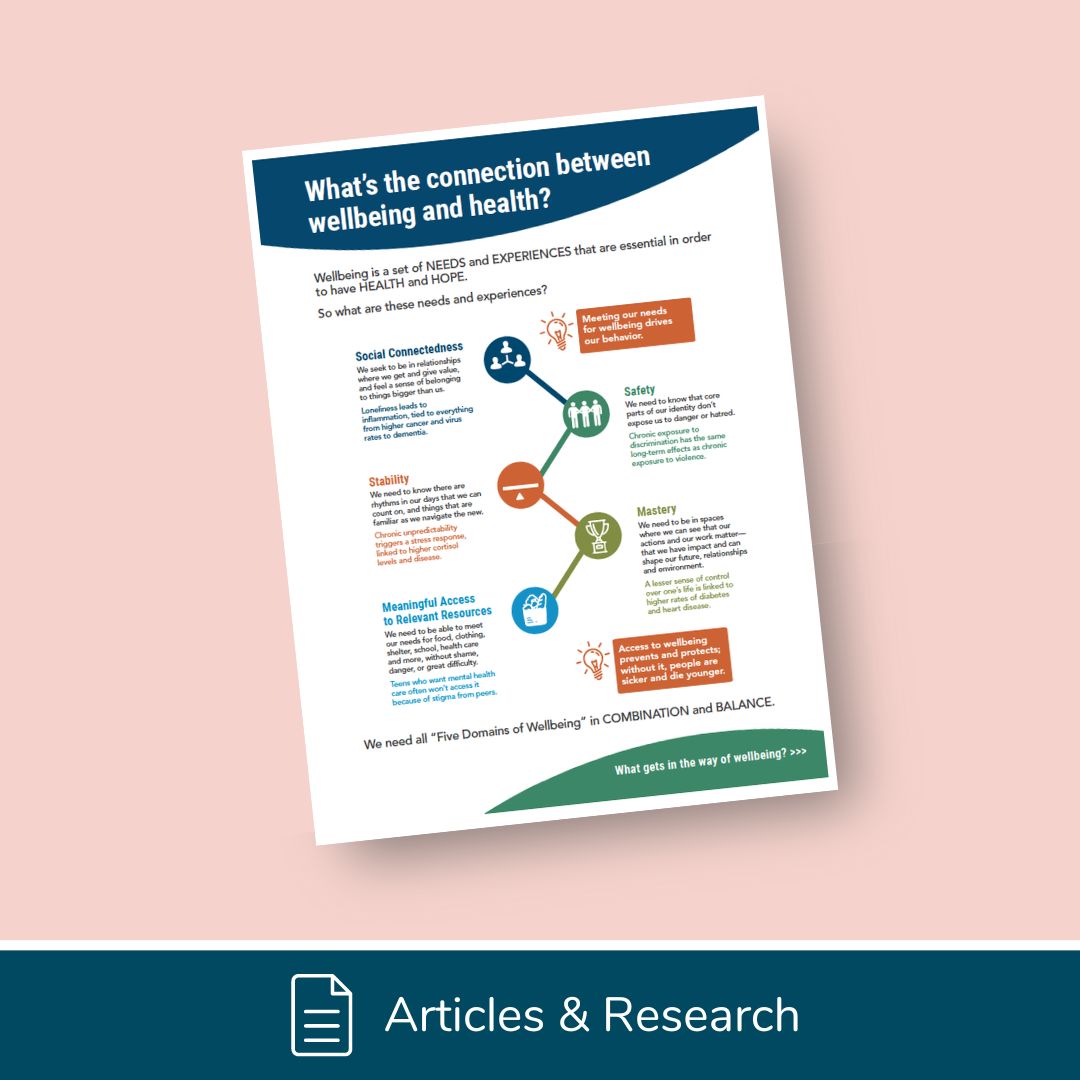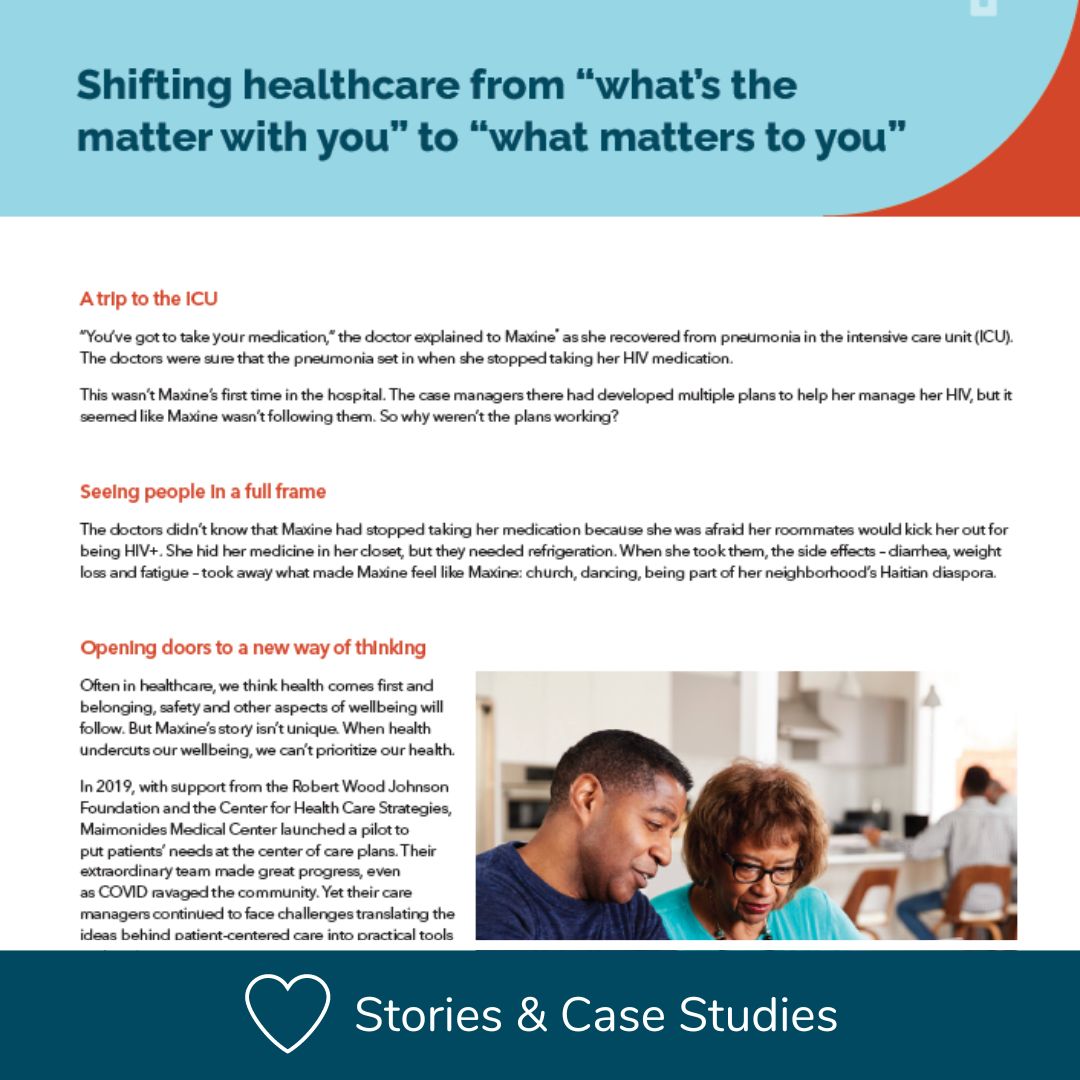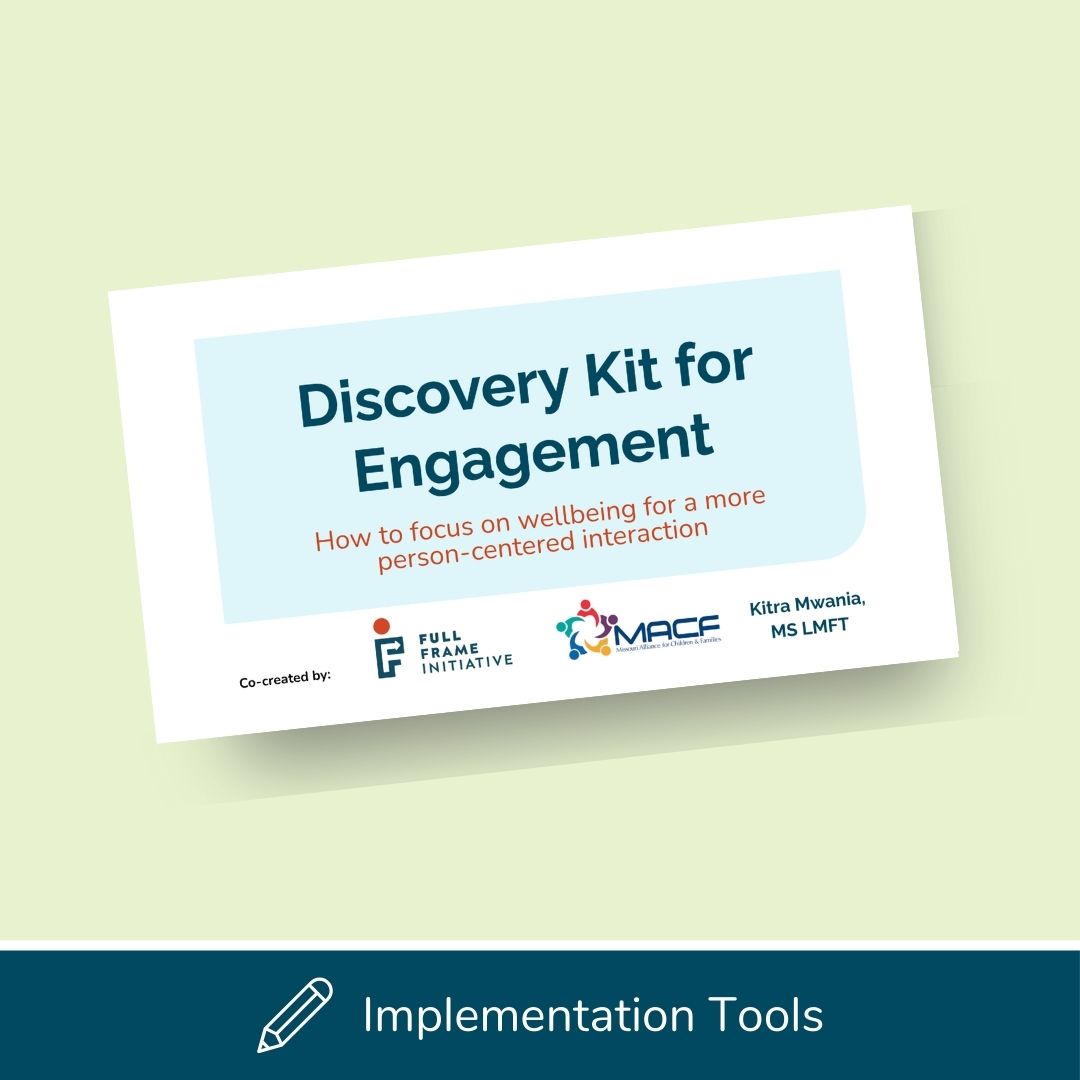Make change in healthcare
Interested in putting a wellbeing approach into practice in healthcare? Here are some places to start.
Shift patient intakes to incorporate wellbeing.
Intake and assessment are an essential part of getting an understanding of what’s going on, but traditional approaches are often incomplete and miss patient strengths. Focus on creating a person-centered experience and ask new kinds of questions that don’t lead with the illness that brought the patient in – you will discover the full frame of patients’ lives and unlock new approaches to helping patients get healthy.
Reimagine case plans.
Instead of focusing goals on a patient’s disease, try aligning with the patient’s personal goals. Asking patients what matters to them makes it possible to reimagine case plans with their goals at the center, which can help lead to long-term success.
Learn from innovative change agents across the country.
Camden Coalition’s COACH framework empowers patients to take control over their health by developing authentic, healing relationships with practitioners. The Live HealthSmart Alabama initiative partners with local businesses and organizations to increase access to healthy food choices, exercise and healthcare in communities where policy choices have made these options less plentiful. Bread for the City in Washington DC is piloting a “food home” model through collaboration between social services, care management, medical and food teams to reduce food insecurity and improve overall health outcomes.







